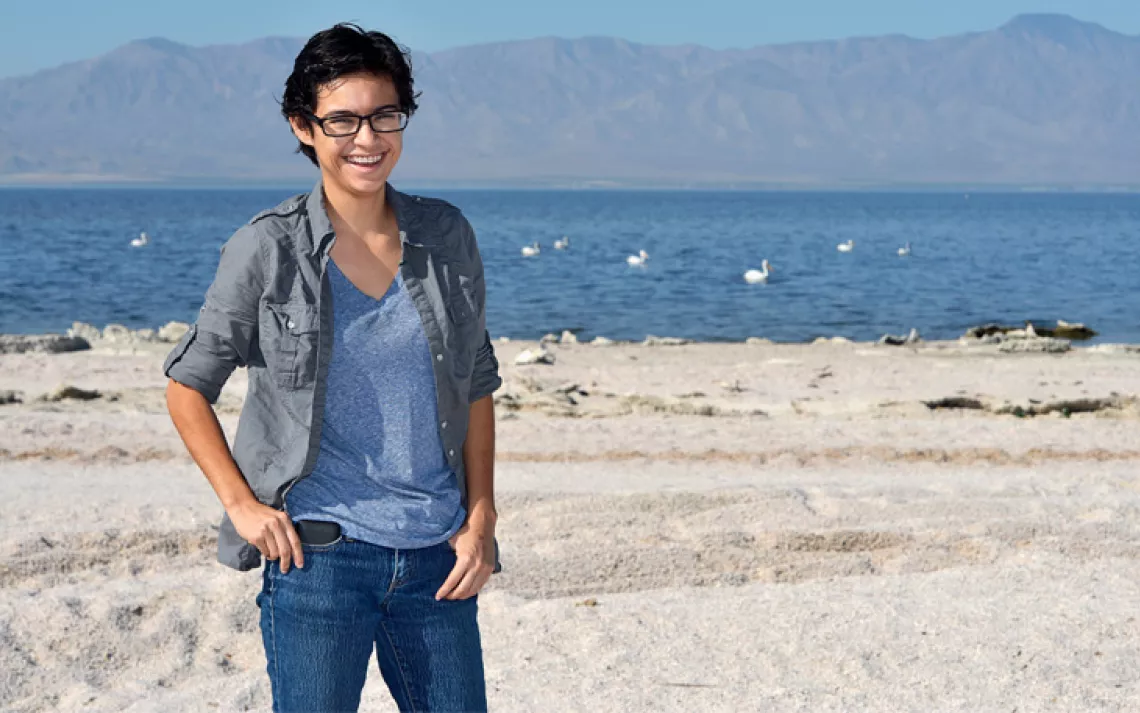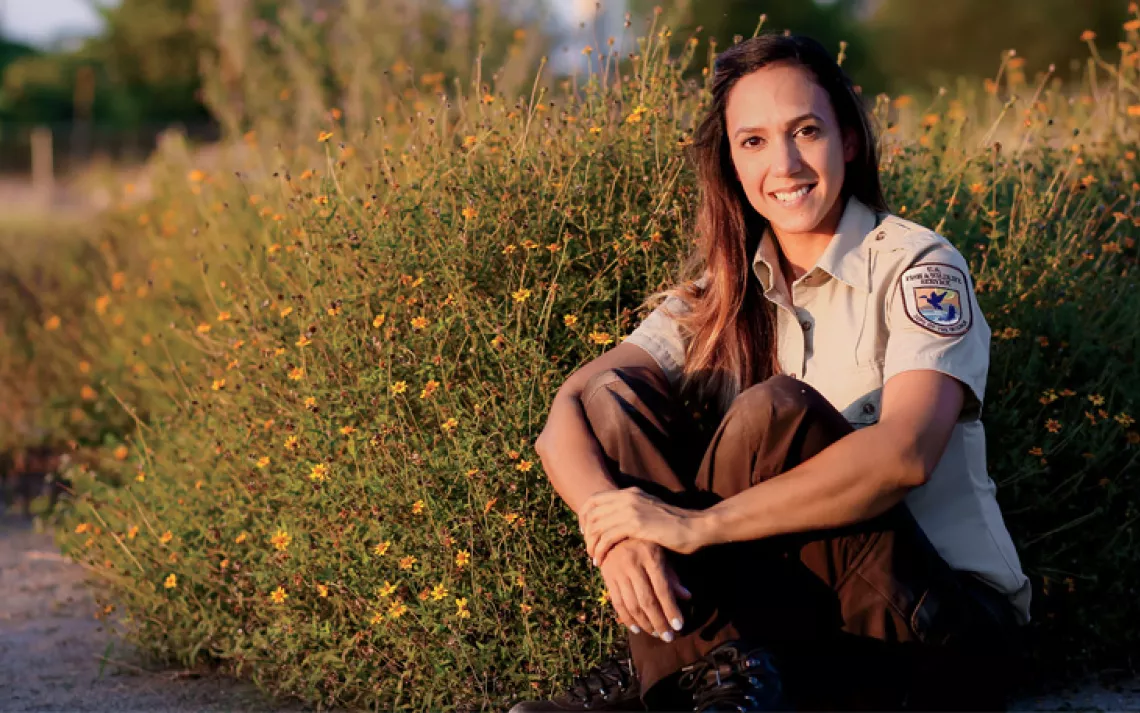Don’t Let the Cold Keep You Inside!
Pro tips and wintry inspo from climber Sophia Danenberg
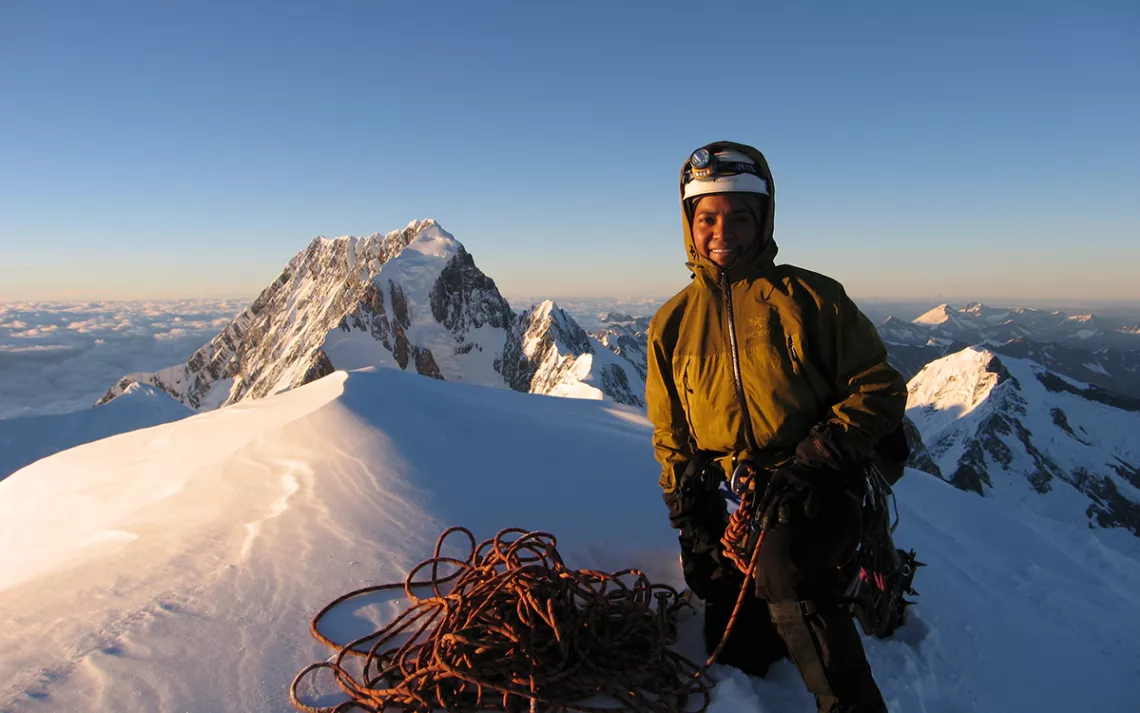
Photos courtesy of Sophia Danenberg
In the winter, it’s easy to come up with reasons not to head outdoors to recreate: It’s cold; ice and snow often blanket trails; it’s cold; it can feel like hazards lurk around every bend … but most of all, it’s cold.
But for every excuse you contrive for staying inside bundled in your slippers and fleece by the fire, there are just as many reasons to layer up and get out there to explore—be it via hiking, camping, backpacking, skiing, showshoeing, you name it.
Winter, after all, is a wondrous season, and few know that better than Sophia Danenberg. An explorer and climber who has summited some of the world’s highest—and coldest—peaks, including Mt. McKinley (now Denali), Kilimanjaro, and Rainier, Danenberg, perhaps most notably, became the first Black woman to summit Everest in 2006.
Needless to say, she’s spent a lot of time outside in very cold places and doesn’t plan to stop anytime soon. Here are her tips for not letting the cold keep you cooped up indoors as well as her (very compelling) insights on why it’s worth it to brave frigid temps to venture into frosted landscapes.
Why winter rules
For starters, “there are sports and activities that you can only do in winter,” Danenberg points out, naming mountaineering, backcountry skiing, and ice climbing. So, the season presents a great opportunity to try something new or maximize your participation in an activity that you can’t enjoy the rest of the year.
Don’t want to learn a new sport? You don’t have to; winter provides ample opportunity to do more of what you already love—especially hiking and camping—simply because there aren’t as many people crowding the trails when it’s chilly, which gives those willing to brave the cold free run of natural playgrounds.
Campground reservations are easier to get (find winter camping pro tips here), trailhead parking lots are emptier, and you’ll likely have vistas and viewpoints all to yourself. In fact, one of Danenberg’s favorite things about hiking in the snow is the solitude. She says it allows her to hit up popular trails that are more congested in the summer and enjoy the quietude offered only by an unpeopled landscape blanketed by snow.
That allure, however, isn’t always enough to assuage the fear and trepidation some outdoorists experience when exposed to extreme weather. So Danenberg’s first piece of advice before braving the cold? Learn how to stay nice and toasty.
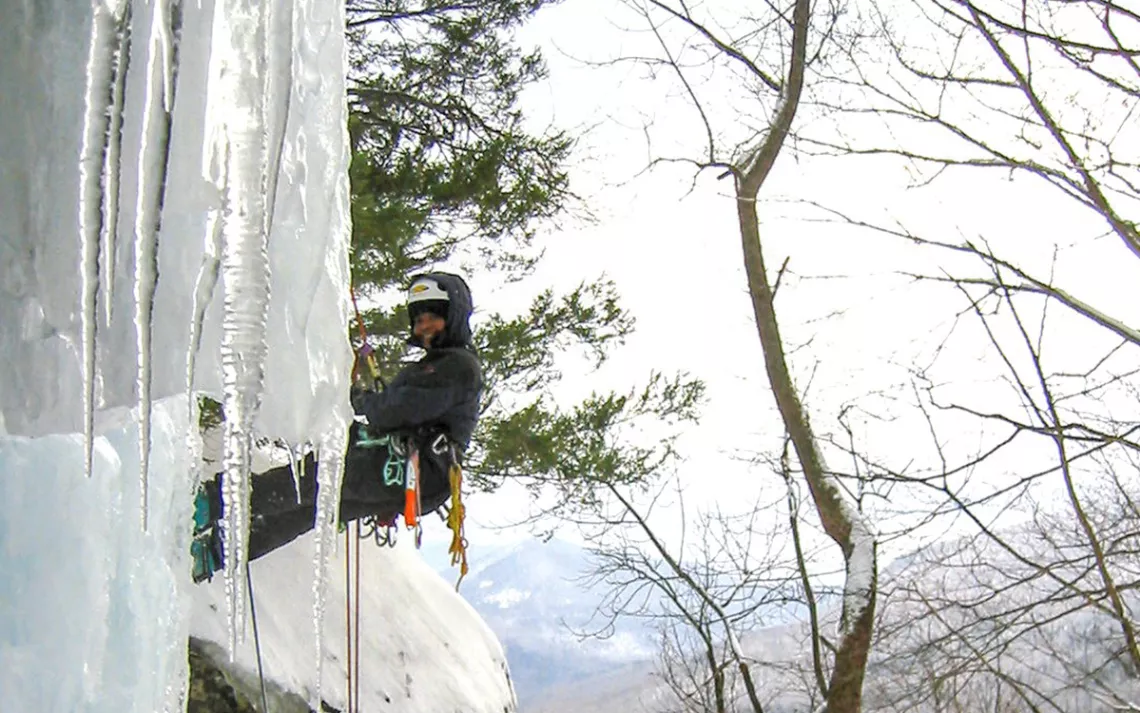
Keep warm
It’s not as hard to do as you might think. But it all starts with layering, explains Danenberg. Which means dressing yourself in a way that assumes you’ll be shedding clothes. Because if you’re hiking, cross-country skiing, or doing anything that works up a sweat, you will get warm. Even on Everest, Danenberg shed bulky down layers as she climbed and her body warmed up.
So, begin with a warm base layer that wicks moisture and add insulating layers like fleece sweaters and puffy jackets. Top it all with a waterproof shell jacket, and bring gloves—a liner, as well as an insulated, waterproof pair—one or two hats, and an extra pair of socks, in the likely event that the pair you’re wearing gets wet.
Next, bring as many hand warmers—electric or disposable—as you need to feel comfortable. Danenberg usually packs extras, just in case.
Then, eat up. “This is your time to indulge in fatty foods,” Danenberg says. So, have that 8 a.m. Snickers bar. Indulge in dense, high-calorie foods in the morning (and at night if camping) to keep your internal engine burning hot. Keep snack bars in a chest pocket or with an extra hand warmer to prevent them from freezing and causing broken teeth.
But don’t stop at food; bring along a hot beverage too. Danenberg will frequently fill an insulated thermos with hot apple cider before a hike, so as to have something warm to sip as she savors the views.
“Feel free to indulge in whatever it is that brings you comfort or makes you warm,” Danenberg says. “Don’t feel that you need to tough it out.”
“Feel free to indulge in whatever it is that brings you comfort or makes you warm—don’t feel that you need to tough it out.”
Stay safe
If it isn’t the cold that concerns you, the fear of what can go wrong this time of year keeps some would-be adventurers from exploring. Indeed, winter carries more risk of foul weather and plenty more variables. After all, roads may be impassable, avalanche risks plague some areas, and winter necessitates specialized and expensive gear (think traction devices, waterproof outerwear, and even ice axes).
To figure out what gear you need and whether you should attempt a given adventure in the first place, start with a quick call to the local ranger station. They can offer advice, direction, and even suggestions for alternate routes—so you’re not heading into a hike, ski, or camping sojourn unprepared.
Also important (this applies year-round but especially in winter, and when exploring alone), tell someone where you’re going and when you’ll be back, then touch base when you return home. That way, they can call for help if they don’t hear from you.
Remember, too, that most cellphones can still place a 911 call even if you don’t have service. But for an extra layer of safety, pack a satellite communicator or locating device. Peace of mind can be everything.
Finally, “have a quitting psychology,” Danenberg advises, laughing at the “ridiculousness” of how that sounds. But it’s a solid nugget: Always give yourself permission to bail on an outing if the going gets too tough or dangerous. If you don’t feel safe, turn around. And if you start a hike and don’t trust your skills, have a backup plan in the form of another hike or activity that might be less daunting.
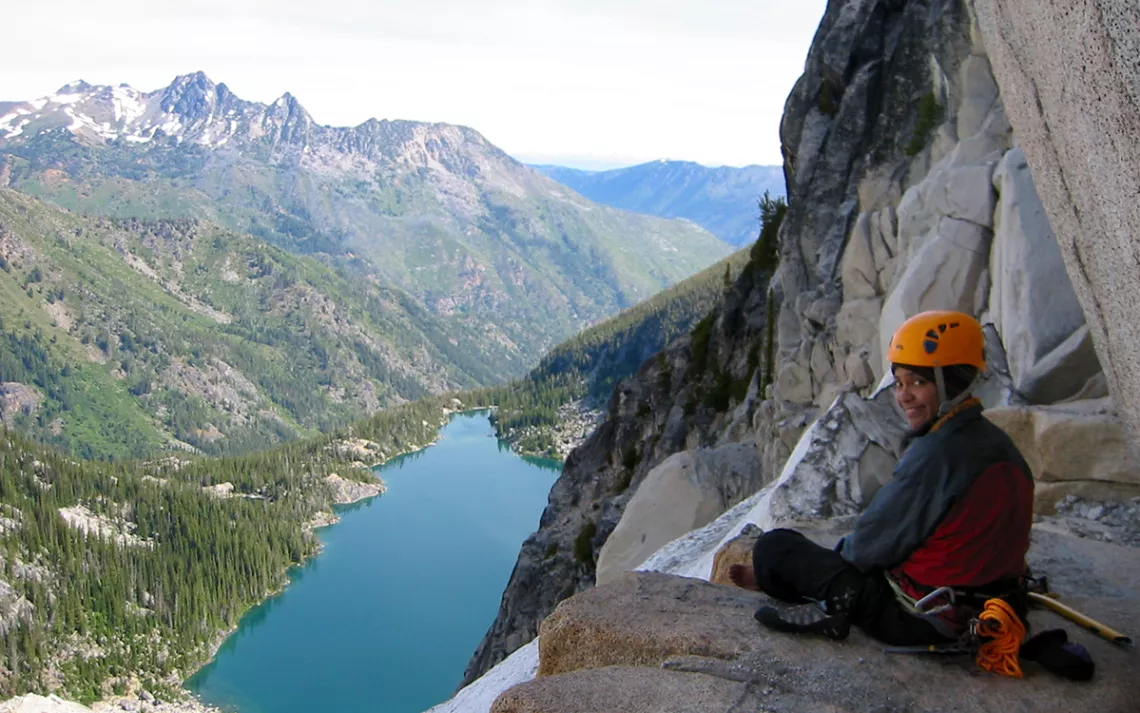
Just do it
If you’re nervous about winter activities, “start with a small objective and try it out—whatever you feel comfortable with.” Car camp for a night before going on a multiday backpacking trip. Stay in a cabin and take wintry day hikes. Do whatever gets you outside. (And check out Sierra’s guide to overcoming your fear of the outdoors.) Then, if you enjoyed it, do more next time. “Find something that seems like it's gonna be fun, find fun people to go out with, and get out there and do it,” Danenberg says. “You might be surprised by how much you like it.”
 The Magazine of The Sierra Club
The Magazine of The Sierra Club

